Inflation bounces back to over 29%
Urban consumers face the brunt of staggering 520% increase in gas prices
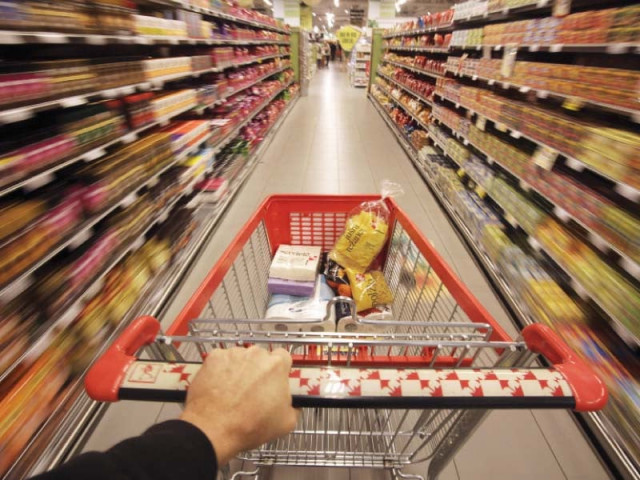
Days before the central bank’s announcement of the new monetary policy, the inflation rate bounced back to 29.2% in November, hurting urban consumers the most, who faced the brunt of a staggering 520% increase in gas prices.
The Pakistan Bureau of Statistics (PBS), the national data-collecting agency, reported on Friday that the Consumer Price Index (CPI) surged to 29.2% last month compared to a year ago. The increase was more than market expectations and has lessened the prospects for a cut in the interest rates, which stand at the country’s highest ever level of 22%.
This reading, the first announced by the PBS after the recently concluded International Monetary Fund (IMF) talks, in which the global lender also cut the inflation forecast for Pakistan to 22.8%, may strengthen the IMF’s view of keeping the policy rate unchanged until core inflation starts easing out when the Monetary Policy Committee (MPC) meets on December 12th.
The IMF has released its executive board meetings’ calendar till December 11th, and Pakistan’s case has not yet been listed for the approval of the second loan tranche of $700 million. This may make it difficult for the central bank to cut the interest rate before the board meeting.
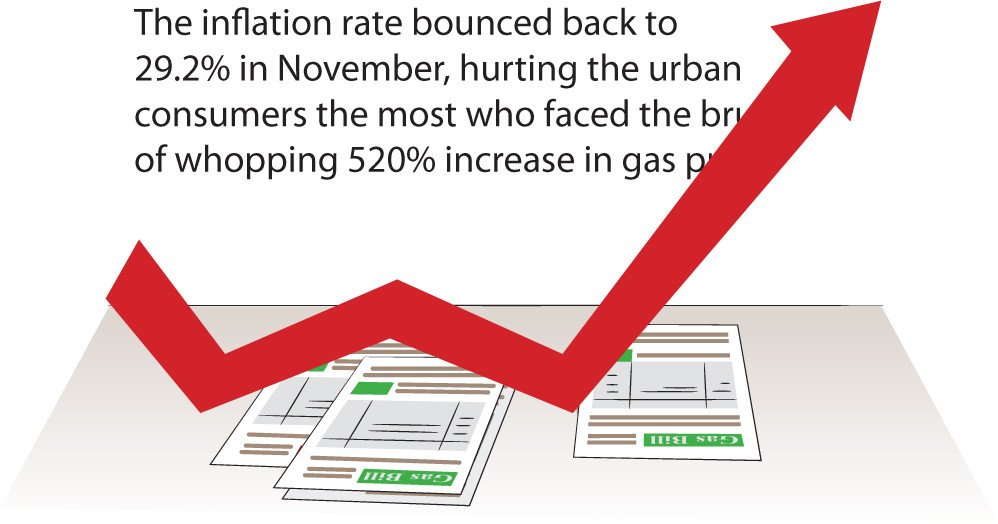
DESIGN: Ibrahim Yahya
The pace of inflation increased in urban areas while there was deceleration in rural areas, reported the PBS. The interim government has increased gas prices with effect from November 1st. Contrary to the claim of increasing prices up to 193%, the PBS report revealed that prices were jacked up as high as 520% for consumers.
Finance Minister Dr Shamshad Akhtar has already committed to the IMF to implement the second round of gas price increases from January aimed at reducing the circular debt, largely built because of the government’s own inefficiencies.
The central bank has assured the IMF that it stands ready to adjust monetary policy to tackle the second wave of inflation.
The people’s purchasing power has massively gone down, and the lenders-pushed energy policies to address fiscal issues through increasing prices have failed to yield the desired results.
On the back of an alarming increase in gas prices during the first round, the inflation rate jumped from 25.5% to 30.4% in the cities, according to the PBS and decelerated to 27.5% in rural areas.
There was a massive increase in non-food inflation in urban areas that surged to 31% within one month while it eased to 26% in rural areas. Items like wheat flour, rice, tea, sugar, beverages, potatoes, and pulses saw a significant increase in their rates last month compared to a year ago.
Read: Inflationary trend
Food inflation accelerated in both urban and rural areas. In urban centres, it increased to 30%, and to over 29% in villages and towns, according to the PBS. Despite improved supplies, sugar prices remained over 50% higher than in November last year.
Core inflation, calculated after excluding volatile energy and food prices, marginally increased to 18.6% in urban areas but slowed down to 26% in rural areas—far above the central bank’s interest rate.
The prices of food and non-alcoholic beverages were higher by 28% last month compared to a year ago. Non-perishable goods saw one-third higher prices, but perishable goods prices marginally reduced to little under 10% due to better supplies.
The inflation rate for the transport consumer price group was 27% up due to a reduction in fuel prices. There was an abnormal increase of 54% in the inflation rate for the recreation and culture group. The cost of dining out also increased nearly one-third last month compared to a year ago.
For the July-November period of the current fiscal year, the data showed that the average inflation rate stood at 28.6%, which was far higher than the official target of 21% for the current fiscal year. The average inflation rate for the first five months in rural areas was 31.4%, whereas it was 27.4% in urban areas.
For the past many years, the SBP has miserably failed to contain inflation through monetary tightening despite keeping interest rates high. Its policies have inflicted heavy budget losses in the shape of a sharp rise in the cost of interest payments, now estimated at Rs8.627 trillion by the IMF—equal to 92% of the FBR’s projected revenues.
The central bank works against its own monetary policy through the supply of currency to the government via commercial banks.
Published in The Express Tribune, December 2nd, 2023.
Like Business on Facebook, follow @TribuneBiz on Twitter to stay informed and join in the conversation.


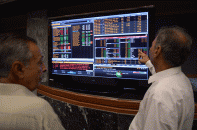
1728020501-0/Express-Tribune-Web-(13)1728020501-0-208x130.webp)

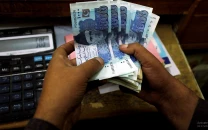




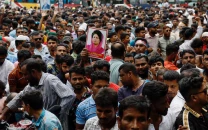
1726134115-0/BeFunk_-(41)1726134115-0-208x130.webp)
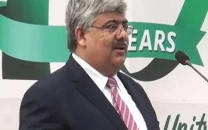






COMMENTS
Comments are moderated and generally will be posted if they are on-topic and not abusive.
For more information, please see our Comments FAQ